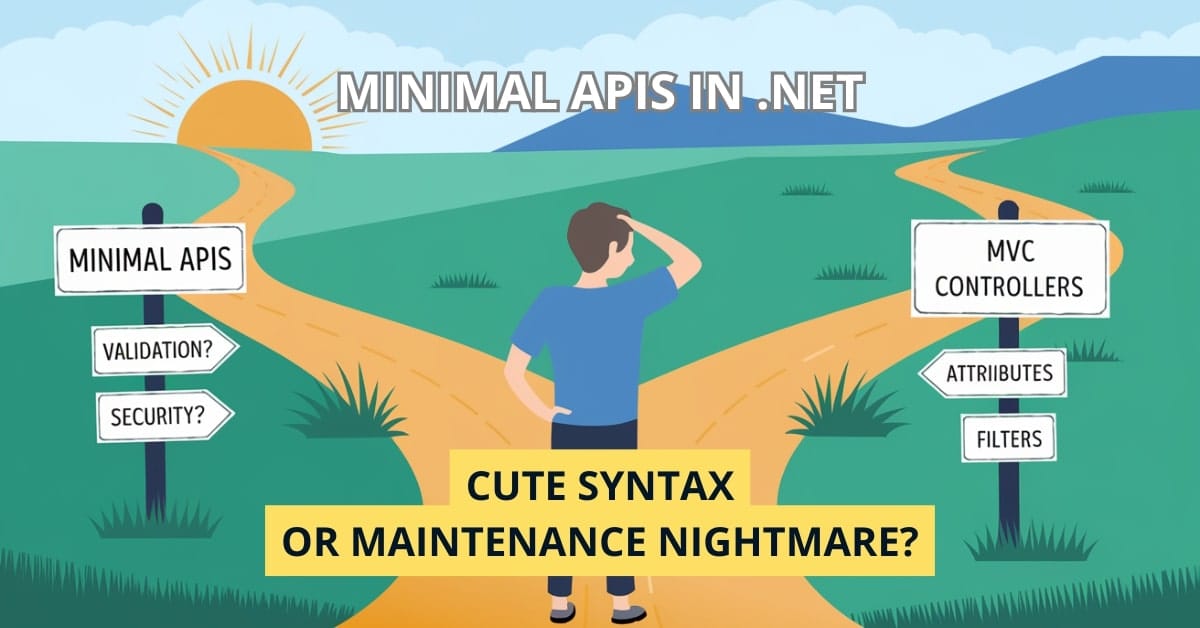Think you can build a clean, production-ready API without controllers? With .NET’s Minimal APIs, it’s not only possible—it’s shockingly simple. A few lines of .MapGet() and .MapPost(), and boom, you have endpoints running. But before you toss out your controllers and services, let’s unpack where Minimal APIs shine, and when they might leave you tangled in spaghetti.
Minimal APIs excel in rapid development and microservices. For small applications, prototypes, or internal tools, the terse syntax reduces boilerplate and improves readability. Here’s a fully functional endpoint:
app.MapPost("/todo", (TodoItem todo, TodoDb db) =>
{
db.Todos.Add(todo);
db.SaveChanges();
return Results.Created($"/todo/{todo.Id}", todo);
});Clean, right? Dependency injection, routing, and result handling are all neatly inline. This is perfect when your API logic is lean and your team is small. But scale this up—add validation, error handling, versioning, authorization—and you’ll see the cracks. Suddenly, you’re repeating logic or scattering concerns across multiple anonymous delegates.
Also, IDE support and testability can suffer. Without named classes or methods, refactoring becomes a guessing game. Shared logic? Prepare to manually extract and wire up your own abstractions.
The sweet spot? Use Minimal API for lightweight services and MVPs. When complexity grows, pivot to traditional controllers or hybrid approaches using endpoint groups and route filters.
Minimal APIs aren’t a fad—they’re a powerful tool when used right. Just don’t let minimal structure lead to maximum maintenance.
Ready to wield Minimal APIs like a pro? Explore real-world patterns in our next articles!
